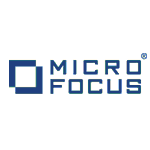COBOL, one of the oldest programming languages created, is often thought to be as dead as Latin. Yet, as we reported in October, COBOL remains a consistently in-demand skill for enterprise developers. Why? Maybe because, according to an announcement from application modernization company Micro Focus, there are still 220 billion lines of COBOL code in active use in enterprise applications today. Micro Focus claims that COBOL still powers 70% of the world’s businesses.

How do you deal with all that legacy code? One way is to re-write everything. But Micro Focus offers another solution – and no, it’s not COBOL on Cogs. MicroFocus offers a tool called Visual COBOL that enables developers to deploy COBOL code to Windows, UNIX, Linux, .NET and Java Virtual Machine (JVM) and the Microsoft Windows Azure. Visual COBOL translates COBOL code directly to the JVM, allowing developers integrate COBOL applications with Java.

Visual COBOL integrates with Microsoft Visual Studio and Eclipse to give developers a modern programming environment for COBOL.
From Micro Focus’s announcement:
“There is an ongoing shift towards examining the impact and specific role of the chosen language in conjunction with selecting a platform,” said Mark Driver, Research Vice President of Gartner Research. “Taking COBOL to new platforms like .NET, JVM or the cloud supports a growing trend toward developers choosing the best language for the job, independent of the choice of best deployment platform to use.”
The obvious advantage is that this is much quicker and cheaper than re-writing all these legacy applications from scratch. The disadvantage is that there will still be a lot of COBOL lurking around your enterprise. But that might not be such a bad thing.
Some more interesting tidbits from the announcement:
- COBOL systems are responsible for transporting up to 72,000 shipping containers, caring for 60 million patients, processing 80% of point-of-sales transactions and connecting 500 million mobile phone users.
- It has been estimated that the average American relies on COBOL at least 13 times during the course of a routine day as they place phone calls, commute to and from work, and use credit cards.
- Around 5 billion lines of new COBOL code are added to live systems every year.
- There are over 200 times more transactions processed by COBOL applications than Google searches each day.










